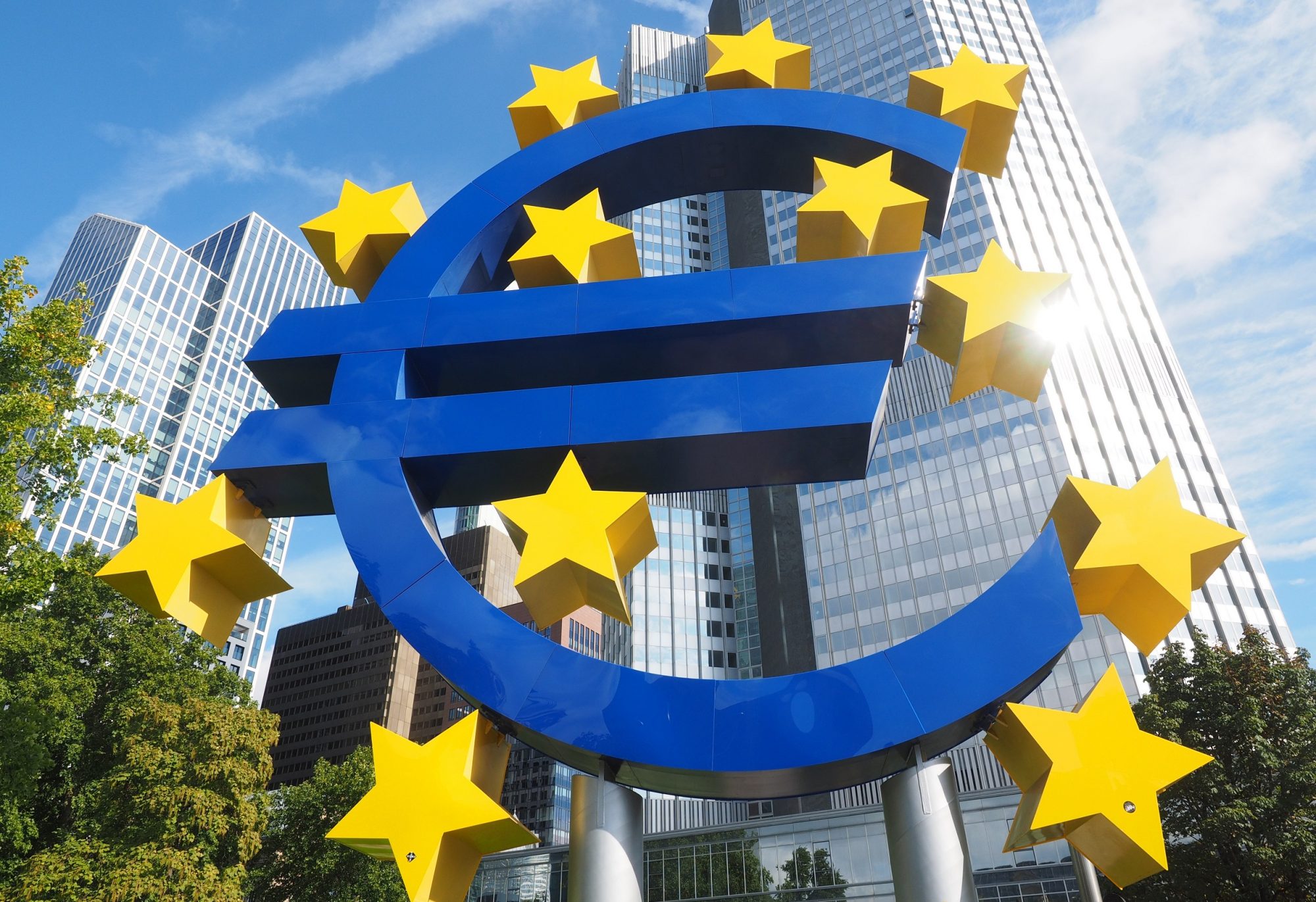In recent years, news about the Greek banking system is increasingly positive. Supported by the economy’s recovery from the economic crisis of the previous decade and new policy instruments to deal with the crisis’ legacy, Greek banks’ bill of health has looked increasingly robust.
Deposits have been recovering after their depletion during the crisis years. At the end of 2021 household and private business deposits increased to €180 billion, recording a 48% increase from their trough back in 2016. The pandemic did not reverse the trend; on the contrary, it accelerated the rise of deposits due to precautionary savings, economic support measures to households and businesses (including deferral of tax, social security, and bank debt obligations) and the strong recovery of the economy in 2021.
Greek banks have also been able to bolster their liquidity through their renewed access to the interbank market, lost during the crisis. This has been facilitated in the past two years by their participation in the Eurosystem’s longer-term refinancing operations, introduced as a response to the pandemic, and the ability to use Greek government bonds as eligible collateral. The European Central Bank’s (ECB) recent decision to continue to accept Greek government bonds as collateral for refinancing operations until the expiration of the Pandemic Emergency Purchase Programme (PEPP),[1] will sustain these favourable conditions in the medium-term. This is important as ECB’s operations constitute a significant financing channel for the Greek banking system; at the end of 2021 Greek banks had borrowed more than €50 billion from the Eurosystem. [2]
Moreover, as the prospects of the Greek economy improve, Greek banks have been able to tap the international markets to raise funds. In 2021 Greek banks raised €3.5 billion through issuance of bonds. This practice is set to continue as banks need to meet the minimum requirement for own funds and eligible liabilities (MREL),[3] at least until the end of 2025. Increased appetite for investments in the Greek banking system has also allowed banks to raise capital through equity, strengthening further their capital base.
Finally, and perhaps most importantly, the efforts to reduce the extremely high stock of Non-performing Loans (NPLs) have started to produce results. During 2020 the stock of NPLs was reduced by €21.3 billion, while last year it was further reduced by €28.8 billion.[4] As a result of these developments, NPLs are down from their pick of €107 billion in March 2016 to €18.4 billion at the end of 2021, a decline of 82.8%.
Such progress notwithstanding the Greek banking system continues to face several challenges, new and old. First, the Russian invasion of Ukraine has increased uncertainty and impacted energy prices strengthening the inflationary pressures felt already since late 2021. High inflation is expected to affect adversely consumption patterns and business profitability, which could lead to a new wave of NPLs, a prospect which was already likely before the war, as the pandemic support measures were set to expire. Indeed, during 2021 €4.2 billion of new NPLs were created, while another €9.4 billion of loans were still under various support and deferral schemes.[5] It is obvious that there is no room for complacency. Besides, despite their remarkable decline, NPLs remain at a much higher level compared to the European average (12.8% vs 2% of all loans at the end of 2021).[6]
On the other hand, the reduction of NPLs, while necessary, carries its own troubles. The sale of NPL portfolios unavoidably results in increased losses. Sure enough, Greek banks posted substantial losses in both 2020 and 2021. This has led to a deterioration of the banks’ capital adequacy ratios in 2021, with both the Common Equity Tier 1 and Total Capital Ratio falling well below the averages for other EU banks. Things get even trickier as banks need to gradually implement the International Financial Reporting Standard (IFRS) 9,[7] which leads to increased loan-loss provisions and therefore further deterioration of the capital adequacy ratios.
Incurring higher losses affects not only the size of the banks’ capital but also its quality. A large part of Greek banks’ capital is made up by Deferred Tax Credits (DTCs). In 2021, the latter’s share in the banks’ capital increased to over 60%. The big share of DTCs in Greek banks’ capital is worrisome, as this is not considered a high-quality type of capital and is subject to uncertainty, as reiterated by the ECB in its opinion in July 2021 over a proposed law amendment regarding the amortization of losses from NPLs.[8]
The large share of DTCs in Greek banks’ capital also raises the issue of the sovereign-bank nexus, one of the most important aspects of the previous crisis. The exposure of Greek banks to public debt has been increasing again in recent years. In 2021, the banks’ Greek government bond portfolio amounted to €28.3 billion, increased by more than 70% since 2019.[9] As a result, the banking system’s exposure to central government stood at 22.5% of total bank assets.[10] This trend, combined with the heavy reliance on DTCs and on government guarantees used in the schemes to sale NPLs, set the stage for a growing, long-term engagement of Greek banks and the Greek state, which is a cause for concern.
The issues described above, ultimately impact on the banks’ ability to fulfill their primary mission, which is to fund the economy. Between 2011 and 2019 credit growth in Greece was negative. The resulting credit crunch deepened and prolonged the crisis. While this trend has been reversed since 2020, the level of funding towards the private sector remains at a very low level, substantially reduced compared to the pre-crisis period.
The slow recovery of credit undermines the growth potential of the economy and limits banks’ profit-making capacity, and therefore their own growth prospects and resilience. The successful transfer of NPLs from the banks’ balance sheets does not guarantee a healthier credit environment as the debtors of these loans continue to be excluded from new bank credit. The private debt overhang acts as a drag on the economy. That burden could be further increased by the recent shocks. Some businesses did not survive the pandemic, while those that did and have received new credit, often with the support of the Hellenic Development Bank (HDB) or the European Investment Bank (EIB), may be overwhelmed by the inflationary shock following the war in Ukraine.
The private debt dynamics are further aggravated by the structure of the economy. Small and very small businesses, typically operating at low-value-added, non-tradable sectors, highly dependent on domestic demand and with limited capacity for growth dominate the Greek economy. Burdened with legacy debts from the previous crises, these businesses are particularly vulnerable in the current macroeconomic environment.[11]
Ultimately, the fate of banks is tied up with that of the broader economy. The banking system shapes and is itself affected by the dominant growth regime, which in Greece has been shown to be both unbalanced and unsustainable. As there is a long way to go to increase extroversion, productivity, and innovation, organic growth will not be easy for Greek banks, particularly since during the crisis they shed a large part of their foreign operations. In this context, the surge in Foreign Direct Investment (FDI) in recent years and the implementation of the Recovery and Resilience Plan (RRP) provide unique opportunities for banking business that also helps the economy onto a trajectory of sustainable growth. Beyond public policies necessary to complete the reform of the broader financial system,[12] Greek banks also need to evolve and rid themselves from the troubled legacies of the past; they should build on progress made during the crisis, to complete the modernization of their corporate governance, rationalize their operations and accelerate their digitalization. For better or for worse, the transformation of the Greek economy and that of the Greek banking system go hand in hand.
[1] European Central Bank (2022), Press Release, 24 March, available at: ECB announces timeline to gradually phase out temporary pandemic collateral easing measures (europa.eu)
[2] Bank of Greece (2022) Financial Stability Review, pp. 43-44, May, Athens (in Greek)
[3] The purpose of MREL is to ensure that banks maintain “sufficient eligible instruments” to facilitate the implementation of the chosen resolution strategy in case of a crisis. MREL serves to prevent a bank’s resolution from depending on the provision of public financial support, and so helps to ensure that shareholders and creditors contribute to loss absorption and recapitalization. See Single Resolution Board (2021) Minimum Requirement for Own Funds and Eligible Liabilities (MREL): SRB Policy under the Banking Package, May
[4] Bank of Greece, op. cit., p.34-41
[5] Ibid, p. 36
[6] Ibid, p.35
[7] IFRS 9 is part of the IFRSs, a set of globally accepted accounting standards developed by the International Accounting Standards Board (IASB). It specifies how an entity should classify and measure financial assets, financial liabilities, and some contracts to buy or sell non-financial items. For more information visit https://www.ifrs.org/issued-standards/list-of-standards/ifrs-9-financial-instruments/
[8] ECB (2021) “Opinion of the European Central Bank on deferred tax assets of Greek credit institutions”, (CON/2021/25), July 29. For a more detailed discussion of the DTCs issue, see Hellenic Court of Audit (2021) Bank funding of the real economy: has the state’s fiscal intervention contributed to the restoration of financial normality? Audit Report 7 (in Greek)
[9] Bank of Greece, op. cit., p.50
[10] Bank of Greece (2022) Governor’s Annual Report, p. 27, April, Athens (in Greek)
[11] See IMF (2022) World Economic Outlook, April, for an analysis of the dynamics of private debt in the aftermath of the pandemic and the recent inflationary shock.
[12] For some recent suggestions, see Hardouvelis, G. A. and N. S. Magginas “H επανεκκίνηση του χρηματοπιστωτικού τομέα της ελληνικής οικονομίας”, diaNEOsis, May
Note: This article gives the views of the author, not the position of Greece@LSE, the Hellenic Observatory or the London School of Economics.






